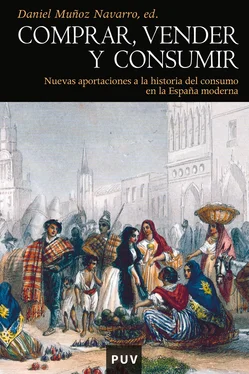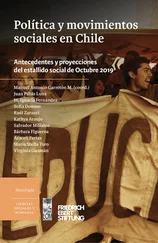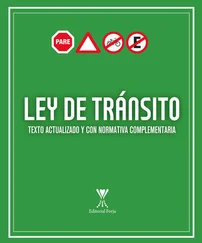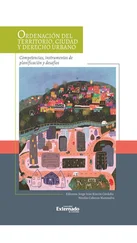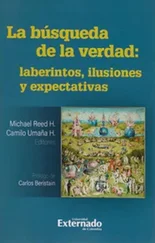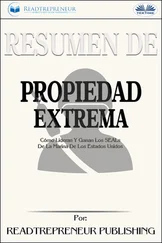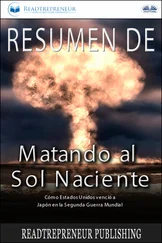[1]E. Gilboy, «Demand as a Factor in the Industrial Revolution», en Facts and Factors in Economic History: Articles by Former Students of Edwin Francis Gay, Cambridge, MA: Harvard University Press, 1932, pp. 620-757.
[2]J. Thirsk, Economic Policy and Projects: The Development of a Consumer Society in Early Modern England, Oxford, Oxford University Press, 1978.
[3]N. McKendrick, «The Consumer Revolution of Eighteenth-Century England», en N. McKendrick, J. Brewer y J.H. Plumb, The Birth of a Consumer Society. The commercialization of Eighteenth-Century England, Londres, Europe Publications Limited, 1982, pp. 9-33.
[4]Véase a modo de síntesis, J. Brewer y R. Porter (editores), Consumption and the world of goods, Londres y Nueva York, Routledge, 1993.
[5]J. de Vries, «Between purchasing power and the world of goods: understanding the household economy in early modern Europe», en J. Brewer y R. Porter (editores), Consumption and the world of goods, Londres-Nueva York, Routledge, 1993, pp. 85-132; J. de Vries, «The industrial revolution and the industrious revolution». Journal of economic history 54, 1994, pp. 249-271; J. de Vries, The industrious revolution: consumer behavior and the household economy, 1650 to the present, Cambridge, Cambridge University Press, 2008.
[6]Al mismo tiempo que aumentó el consumo de bienes de mercado presumiblemente se incrementaron las horas de trabajo, sobre todo en Inglaterra y en los Países Bajos. Véase por ejemplo, N. McKendrick, «The Consumer Revolution of Eighteenth-Century England», op. cit.; M. Berg, Luxury and pleasure in eighteenth-century Britain, Oxford, Oxford University Press, 2005; Anne McCants, «After-death inventories as a source for the study of material culture, economic well-being, and household formation among the poor of eighteenth-century Amsterdam», Historical methods 39 (1), 2006, pp. 10-23; J. de Vries, The industrious revolution: consumer behavior and the household economy, 1650 to the present, op. cit.
[7]J. de Vries, The industrious revolution: consumer behavior and the household economy, 1650 to the present, op. cit., p. x, p. 19, pp. 103-04, pp. 123-24, pp. 159-63, p. 179, p. 182; T.M. Safley, Children of the laboring poor: expectation and experience among the orphans of early modern Augsburg, Leiden-Boston, Brill, 2005, p. 348; R. Beck, «Luxus oder Decencies? Zur Konsumgeschichte der Frühneuzeit als Beginn der Moderne», en R. Reith y T. Meyer (editores), Luxus und Konsum. Eine historische Annäherung. Münster, Waxmann Verlag, 2003, pp. 29-46; M.J. Maynes, «Gender, labor, and globalization in historical perspective: European spinsters in the international textile industry, 1750-1900», Journal of women’s history 15 (4), 2004, pp. 47-66; S. Ogilvie, «Consumption, Social Capital, and the‘Industrious Revolution’ in Early Modern Germany», Cambridge Working Papers in Economics nº 0943, Octubre 2009.
[8]J. de Vries, The industrious revolution: consumer behavior and the household economy, 1650 to the present, op. cit., p. x, p. 38, p. 51, p. 60, p. 88, pp. 92-93, p. 96, pp. 101-02, pp. 106, pp. 117-19, pp. 124-27, p. 132, pp. 134-39, pp. 147-49, pp. 157-61, pp. 164-8, p. 179, pp. 182-85; M.J. Maynes, «Gender, labor, and globalization in historical perspective: European spinsters in the international textile industry, 1750-1900», op. cit., p. 60.
[9]C.M. Belfanti y F. Guisberti, «Clothing and social inequality in early modern Europe: introductory remarks», Continuity and change 15, 2000, pp. 359-365; V. Pinchera (2006), «Art consumption in early modern Florence», comunicación presentada al XIV International Economic History Congress, 2006 Helsinki, 21-25 Agosto.
[10]Para China, véase C.A. Bayly, The birth of the modern world, 1780-1914: global connections and comparisons. Oxford, Blackwell, 2004, p. 52; y K. Pomeranz, The great divergence: Europe, China, and the making of the modern world economy, Princeton, NJ, Princeton University Press, 2000, pp. 94-5. Para Japón, puede consultarse igualmente véase C.A. Bayly, The birth of the modern world, 1780-1914: global connections and comparisons, op. cit., p. 52; y O. Saito (2005), «Pre-modern economic growth revisited: Japan and the West», LSE Department of Economic History working paper 16/05, 2005.
[11]F. Ramos Palencia, «La demanda de textiles en las familias castellanas del Antiguo Régimen: ¿aumento del consumo sin revolución industrial?», Revista de Historia Económica, año XXI, número extraordinario, 2003, pp. 141-180. Más detalles en F. Ramos Palencia, Pautas de consumo y Mercado en Castilla, 1750-1850. Economía Familiar en Palencia al final del Antiguo Régimen, Madrid, Sílex, 2010.
[12]J. de Vries, La economía de Europa en tiempo de crisis. 1600-1750, Madrid, Cátedra, 1982, p. 151 y p. 252.
[13]J. Mokyr, «Demand vs. Supply in the Industrial Revolution», en J. Mokyr (editor), The Economics of the Industrial Revolution, Totowa, Nueva Jersey, Rowman and Allanhed, 1985; J. Mokyr, «La Revolución Industrial y la Nueva Historia Económica (I) y (II)», Revista de Historia Económica, año V, nº 2, 1987, pp. 203-241, y año V, 1987, nº 3, pp. 441- 482; J. Mokyr, «Editor’s Introduction: The New Economic History and the Industrial Revolution », en J. Mokyr (editor), The British Industrial Revolution. An Economic Perspective, Londres, Boulder, 1993, pp. 1-131. No obstante, recientemente Mokyr (2010) ha señalado que «the consumer revolution… clearly preceded the Industrial Revolution». Véase en este sentido J. Mokyr, The Enlightened Economy: An Economic History of Britain 1700-1850, New Haven, Yale University Press, 2010, p. 15.
[14]Véase un resumen sobre el impacto de factores de oferta y demanda en la Revolución Industrial en D. Flacher, S. Gastaldo, J.H. Lorenzi y A. Villemeur, “Une révolution industrielle est-elle le produit de l’offre ou de la demande? ”, Congrès de l’AFSE, septiembre 2008.
[15]N.F.R. Crafts, «English Workers’ Real Wages during the Industrial Revolution: Some Remaining Problems», the Journal of Economic History, 45 (01), 1985, pp. 139-144.
[16]E. Boserup, Las condiciones del desarrollo en la agricultura: la economía del cambio agrario bajo la presión demográfica, Madrid, Tecnos, 1967.
[17]G. Clark y Y. van der Werf, «Work in progress? The Industrious Revolution», Journal of Economic History 58, nº 3, 1998, pp. 830-43.
[18]H.J. Voth, Time and Work in England, 1750-1850, Oxford, Oxford University Press, 2001; H.J. Voth, «The Longest Years: New Estimates of Labor Input in England, 1760- 1830.» Journal of Economic History, 61 (4), 2001, pp. 1065-82.
[19]G. Clark y Y. van der Werf, «Work in progress? The Industrious Revolution», op. cit., p. 838, cuadro 1.
[20]G. Clark y Y. van der Werf, «Work in progress? The Industrious Revolution»,op. cit., p. 840, cuadro 2.
[21]G. Clark, A Farewell to Alms. A Brief Economic History of the World, Princeton y Oxford, Princeton University Press, 2007.
[22]G. Clark, «The Consumer Revolution: Turning Point in Human History, or Statistical Artifact?», Munich Personal RePEc Archive (MPRA), 2010.
[23]B. Yun, «Inventarios post-mortem, consumo y niveles de vida del campesinado del Antiguo Régimen. Problemas metodológicos a la luz de la investigación internacional», en J. Torras y B. Yun (editores), Consumo, Condiciones de vida y Comercialización en Cataluña y Castilla, ss. XVII-XIX, Valladolid, Junta de Castilla y León, 1999, pp. 27-40.
[24]F. Ramos Palencia, Pautas de consumo y Mercado en Castilla, 1750-1850. Economía Familiar en Palencia al final del Antiguo Régimen, op. cit.
[25]T. Wijsenbeck, «Delf in the eighteenth century», en H. van der Woude y A. Schuurman (editores), Probate Inventories. A new source for the Historical Study of Wealth, Material Culture and Agricultural Development. Utrecht: Hes Publishers, 1980, pp. 157-176; M. Overton, «English probate inventories and the measurement of agricultural change», Probate Inventories. A new source for the Historical Study of Wealth, Material Culture and Agricultural Development. Utrecht: Hes Publishers, 1980, pp. 205-215.
Читать дальше
